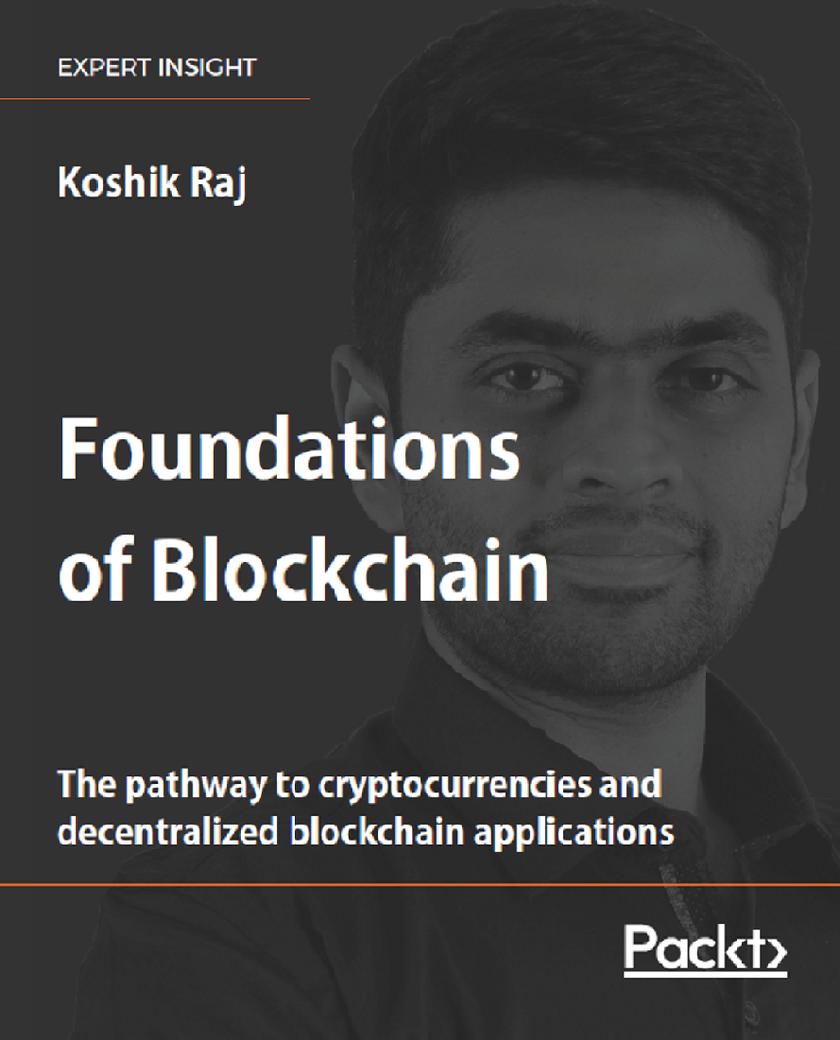
Foundations of Blockchain
¥73.02
Learn the foundations of blockchain technology - its core concepts and algorithmic solutions across cryptography, peer-to-peer technology, and game theory. Key Features * Learn the core concepts and foundations of the blockchain and cryptocurrencies * Understand the protocols and algorithms behind decentralized applications * Master how to architect, build, and optimize blockchain applications Book Description Blockchain technology is a combination of three popular concepts: cryptography, peer-to-peer networking, and game theory. This book is for anyone who wants to dive into blockchain from first principles and learn how decentralized applications and cryptocurrencies really work. This book begins with an overview of blockchain technology, including key definitions, its purposes and characteristics, so you can assess the full potential of blockchain. All essential aspects of cryptography are then presented, as the backbone of blockchain. For readers who want to study the underlying algorithms of blockchain, you’ll see Python implementations throughout. You’ll then learn how blockchain architecture can create decentralized applications. You’ll see how blockchain achieves decentralization through peer-to-peer networking, and how a simple blockchain can be built in a P2P network. You’ll learn how these elements can implement a cryptocurrency such as Bitcoin, and the wider applications of blockchain work through smart contracts. Blockchain optimization techniques, and blockchain security strategies are then presented. To complete this foundation, we consider blockchain applications in the financial and non-financial sectors, and also analyze the future of blockchain. A study of blockchain use cases includes supply chains, payment systems, crowdfunding, and DAOs, which rounds out your foundation in blockchain technology. What you will learn * The core concepts and technical foundations of blockchain * The algorithmic principles and solutions that make up blockchain and cryptocurrencies * Blockchain cryptography explained in detail * How to realize blockchain projects with hands-on Python code * How to architect the blockchain and blockchain applications * Decentralized application development with MultiChain, NEO, and Ethereum * Optimizing and enhancing blockchain performance and security * Classical blockchain use cases and how to implement them Who this book is for This book is for anyone who wants to dive into blockchain technology from first principles and build a foundational knowledge of blockchain. Familiarity with Python will be helpful if you want to follow how the blockchain protocols are implemented. For readers who are blockchain application developers, most of the applications used in this book can be executed on any platform.
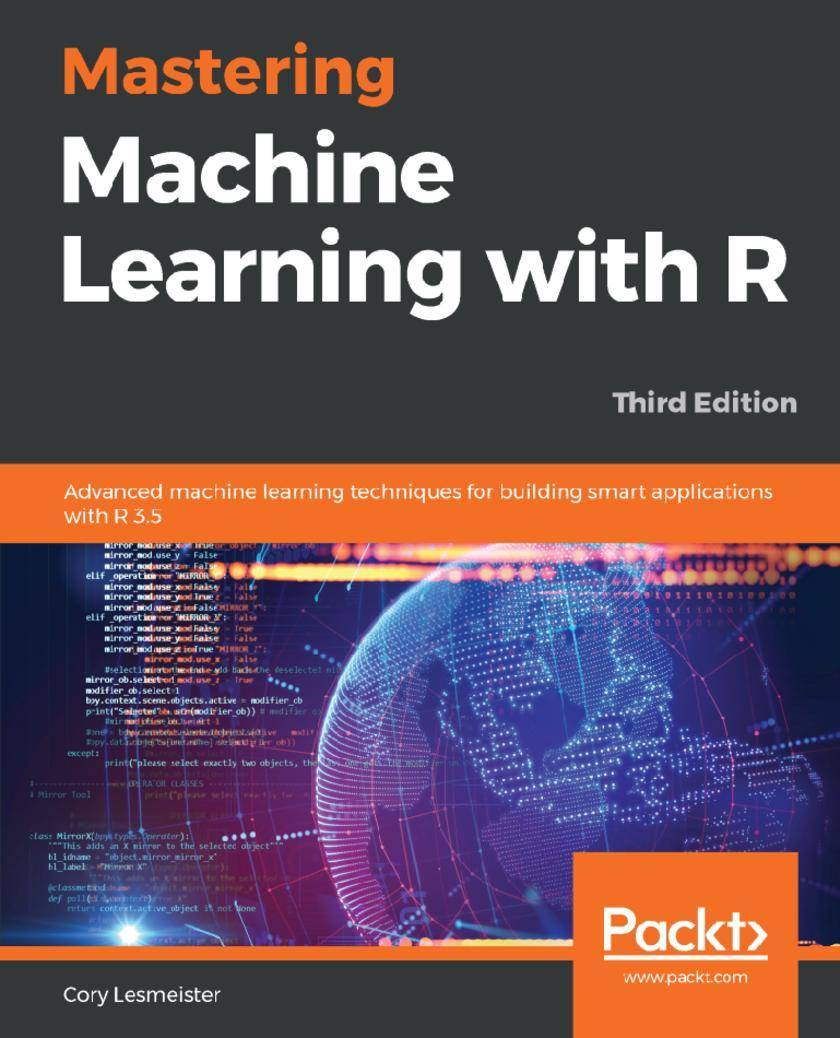
Mastering Machine Learning with R
¥73.02
Stay updated with expert techniques for solving data analytics and machine learning challenges and gain insights from complex projects and power up your applications Key Features * Build independent machine learning (ML) systems leveraging the best features of R 3.5 * Understand and apply different machine learning techniques using real-world examples * Use methods such as multi-class classification, regression, and clustering Book Description Given the growing popularity of the R-zerocost statistical programming environment, there has never been a better time to start applying ML to your data. This book will teach you advanced techniques in ML ,using? the latest code in R 3.5. You will delve into various complex features of supervised learning, unsupervised learning, and reinforcement learning algorithms to design efficient and powerful ML models. This newly updated edition is packed with fresh examples covering a range of tasks from different domains. Mastering Machine Learning with R starts by showing you how to quickly manipulate data and prepare it for analysis. You will explore simple and complex models and understand how to compare them. You’ll also learn to use the latest library support, such as TensorFlow and Keras-R, for performing advanced computations. Additionally, you’ll explore complex topics, such as natural language processing (NLP), time series analysis, and clustering, which will further refine your skills in developing applications. Each chapter will help you implement advanced ML algorithms using real-world examples. You’ll even be introduced to reinforcement learning, along with its various use cases and models. In the concluding chapters, you’ll get a glimpse into how some of these blackbox models can be diagnosed and understood. By the end of this book, you’ll be equipped with the skills to deploy ML techniques in your own projects or at work. What you will learn * Prepare data for machine learning methods with ease * Understand how to write production-ready code and package it for use * Produce simple and effective data visualizations for improved insights * Master advanced methods, such as Boosted Trees and deep neural networks * Use natural language processing to extract insights in relation to text * Implement tree-based classifiers, including Random Forest and Boosted Tree Who this book is for This book is for data science professionals, machine learning engineers, or anyone who is looking for the ideal guide to help them implement advanced machine learning algorithms. The book will help you take your skills to the next level and advance further in this field. Working knowledge of machine learning with R is mandatory.
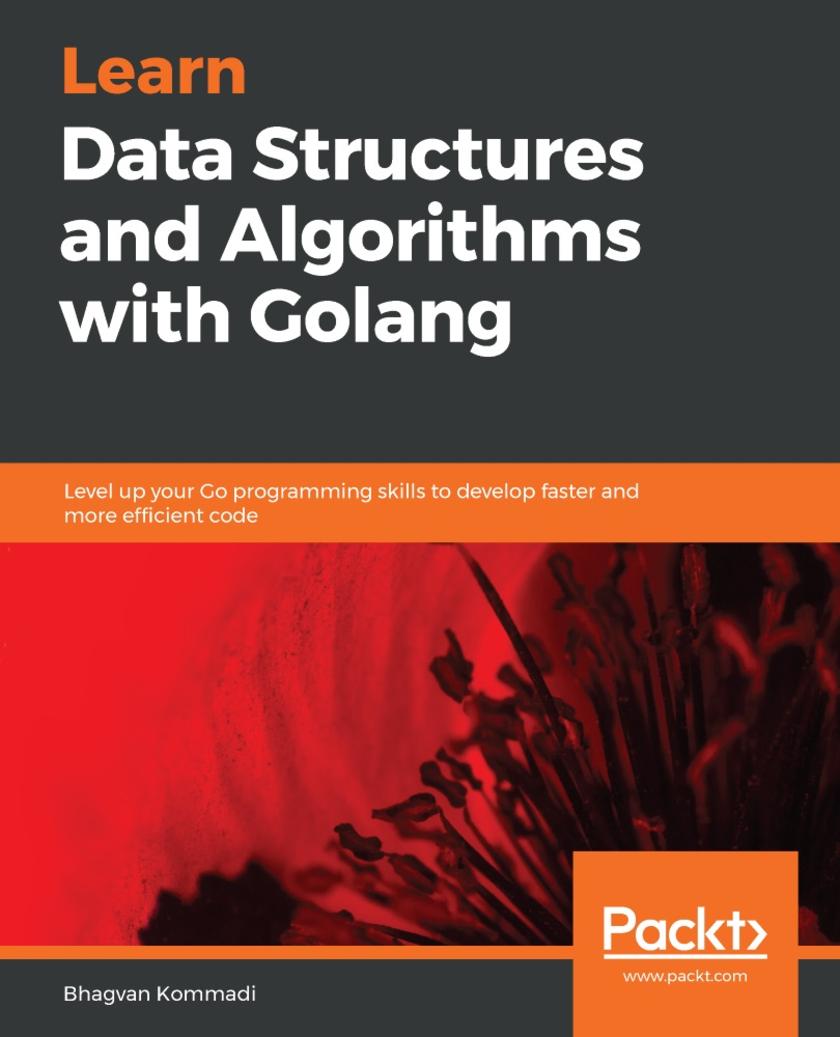
Learn Data Structures and Algorithms with Golang
¥73.02
Explore Golang's data structures and algorithms to design, implement, and analyze code in the professional setting Key Features * Learn the basics of data structures and algorithms and implement them efficiently * Use data structures such as arrays, stacks, trees, lists and graphs in real-world scenarios * Compare the complexity of different algorithms and data structures for improved code performance Book Description Golang is one of the fastest growing programming languages in the software industry. Its speed, simplicity, and reliability make it the perfect choice for building robust applications. This brings the need to have a solid foundation in data structures and algorithms with Go so as to build scalable applications. Complete with hands-on tutorials, this book will guide you in using the best data structures and algorithms for problem solving. The book begins with an introduction to Go data structures and algorithms. You'll learn how to store data using linked lists, arrays, stacks, and queues. Moving ahead, you'll discover how to implement sorting and searching algorithms, followed by binary search trees. This book will also help you improve the performance of your applications by stringing data types and implementing hash structures in algorithm design. Finally, you'll be able to apply traditional data structures to solve real-world problems. By the end of the book, you'll have become adept at implementing classic data structures and algorithms in Go, propelling you to become a confident Go programmer. What you will learn * Improve application performance using the most suitable data structure and algorithm * Explore the wide range of classic algorithms such as recursion and hashing algorithms * Work with algorithms such as garbage collection for efficient memory management * Analyze the cost and benefit trade-off to identify algorithms and data structures for problem solving * Explore techniques for writing pseudocode algorithm and ace whiteboard coding in interviews * Discover the pitfalls in selecting data structures and algorithms by predicting their speed and efficiency Who this book is for This book is for developers who want to understand how to select the best data structures and algorithms that will help solve coding problems. Basic Go programming experience will be an added advantage.
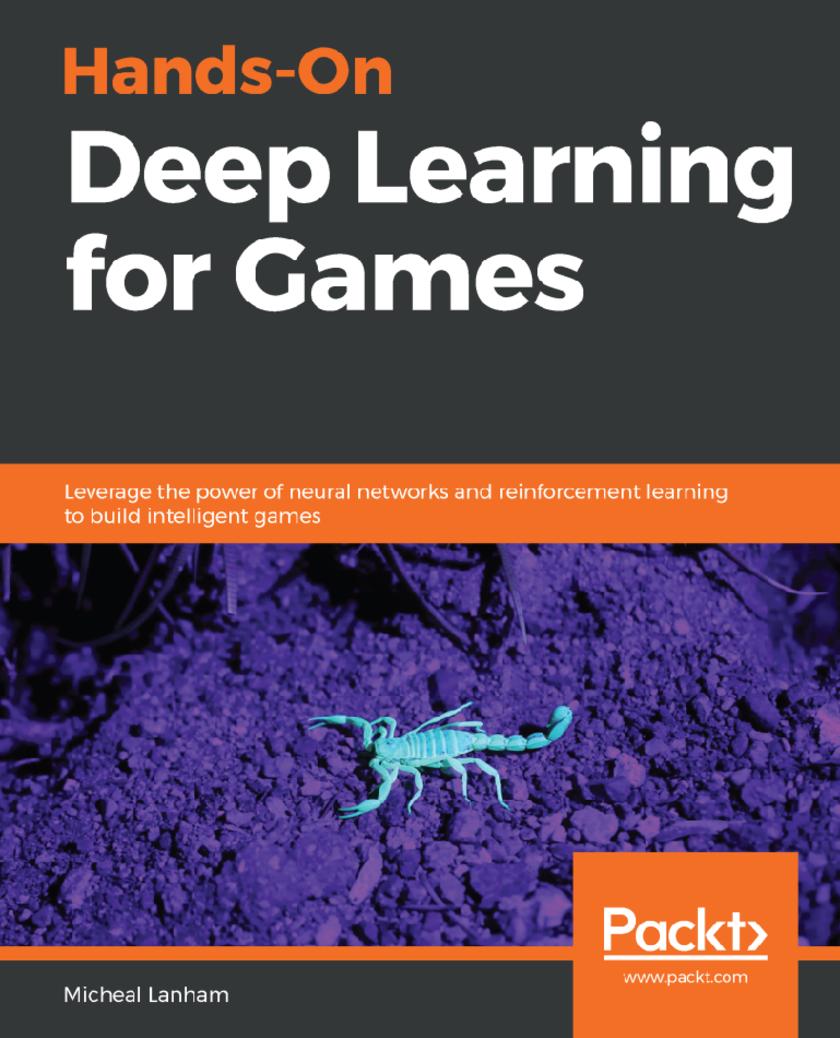
Hands-On Deep Learning for Games
¥73.02
Understand the core concepts of deep learning and deep reinforcement learning by applying them to develop games Key Features * Apply the power of deep learning to complex reasoning tasks by building a Game AI * Exploit the most recent developments in machine learning and AI for building smart games * Implement deep learning models and neural networks with Python Book Description The number of applications of deep learning and neural networks has multiplied in the last couple of years. Neural nets has enabled significant breakthroughs in everything from computer vision, voice generation, voice recognition and self-driving cars. Game development is also a key area where these techniques are being applied. This book will give an in depth view of the potential of deep learning and neural networks in game development. We will take a look at the foundations of multi-layer perceptron’s to using convolutional and recurrent networks. In applications from GANs that create music or textures to self-driving cars and chatbots. Then we introduce deep reinforcement learning through the multi-armed bandit problem and other OpenAI Gym environments. As we progress through the book we will gain insights about DRL techniques such as Motivated Reinforcement Learning with Curiosity and Curriculum Learning. We also take a closer look at deep reinforcement learning and in particular the Unity ML-Agents toolkit. By the end of the book, we will look at how to apply DRL and the ML-Agents toolkit to enhance, test and automate your games or simulations. Finally, we will cover your possible next steps and possible areas for future learning. What you will learn * Learn the foundations of neural networks and deep learning. * Use advanced neural network architectures in applications to create music, textures, self driving cars and chatbots. * Understand the basics of reinforcement and DRL and how to apply it to solve a variety of problems. * Working with Unity ML-Agents toolkit and how to install, setup and run the kit. * Understand core concepts of DRL and the differences between discrete and continuous action environments. * Use several advanced forms of learning in various scenarios from developing agents to testing games. Who this book is for This books is for game developers who wish to create highly interactive games by leveraging the power of machine and deep learning. No prior knowledge of machine learning, deep learning or neural networks is required this book will teach those concepts from scratch. A good understanding of Python is required.
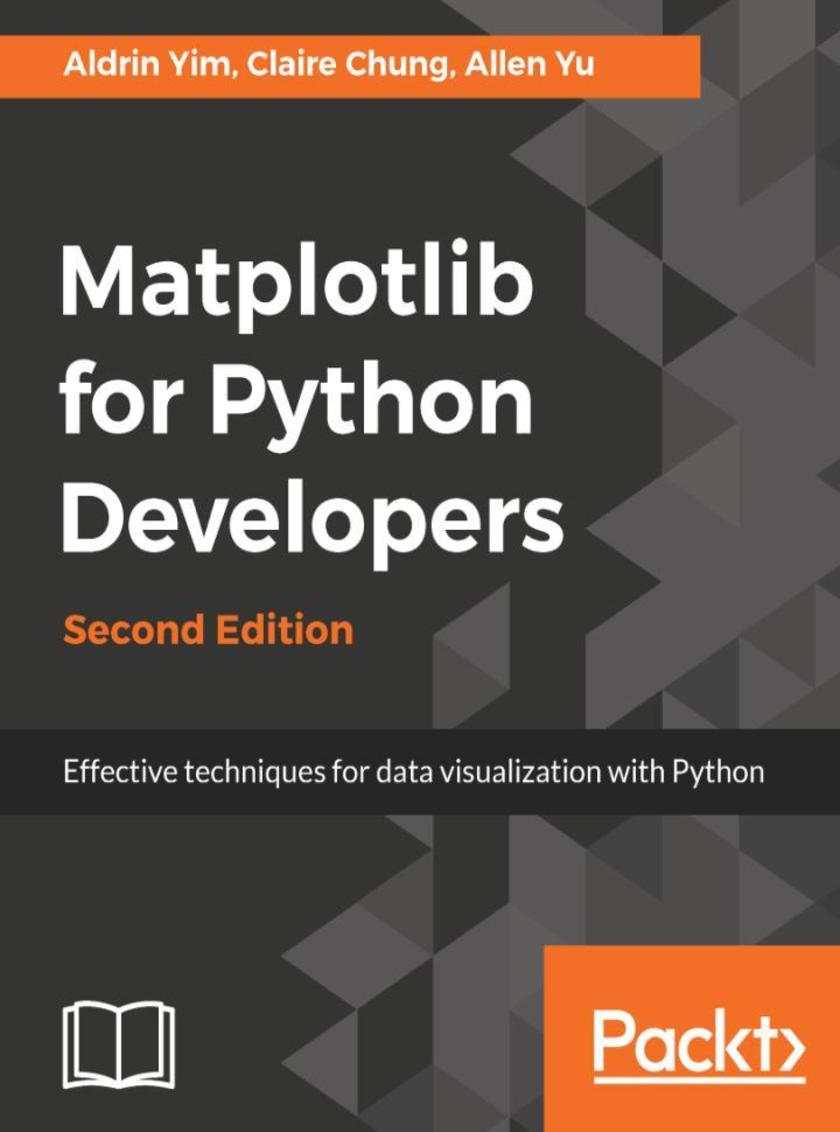
Matplotlib for Python Developers
¥73.02
Leverage the power of Matplotlib to visualize and understand your data more effectively About This Book ? Perform effective data visualization with Matplotlib and get actionable insights from your data ? Design attractive graphs, charts, and 2D plots, and deploy them to the web ? Get the most out of Matplotlib in this practical guide with updated code and examples Who This Book Is For This book is essentially for anyone who wants to create intuitive data visualizations using the Matplotlib library. If you’re a data scientist or analyst and wish to create attractive visualizations using Python, you’ll find this book useful. Some knowledge of Python programming is all you need to get started. What You Will Learn ? Create 2D and 3D static plots such as bar charts, heat maps, and scatter plots ? Get acquainted with GTK+3, Qt5, and wxWidgets to understand the UI backend of Matplotlib ? Develop advanced static plots with third-party packages such as Pandas, GeoPandas, and Seaborn ? Create interactive plots with real-time updates ? Develop web-based, Matplotlib-powered graph visualizations with third-party packages such as Django ? Write data visualization code that is readily expandable on the cloud platform In Detail Python is a general-purpose programming language increasingly being used for data analysis and visualization. Matplotlib is a popular data visualization package in Python used to design effective plots and graphs. This is a practical, hands-on resource to help you visualize data with Python using the Matplotlib library. Matplotlib for Python Developers, Second Edition shows you how to create attractive graphs, charts, and plots using Matplotlib. You will also get a quick introduction to third-party packages, Seaborn, Pandas, Basemap, and Geopandas, and learn how to use them with Matplotlib. After that, you’ll embed and customize your plots in third-party tools such as GTK+3, Qt 5, and wxWidgets. You’ll also be able to tweak the look and feel of your visualization with the help of practical examples provided in this book. Further on, you’ll explore Matplotlib 2.1.x on the web, from a cloud-based platform using third-party packages such as Django. Finally, you will integrate interactive, real-time visualization techniques into your current workflow with the help of practical real-world examples. By the end of this book, you’ll be thoroughly comfortable with using the popular Python data visualization library Matplotlib 2.1.x and leveraging its power to build attractive, insightful, and powerful visualizations. Style and approach Step by step approach to learning the best of Matplotlib 2.1.x
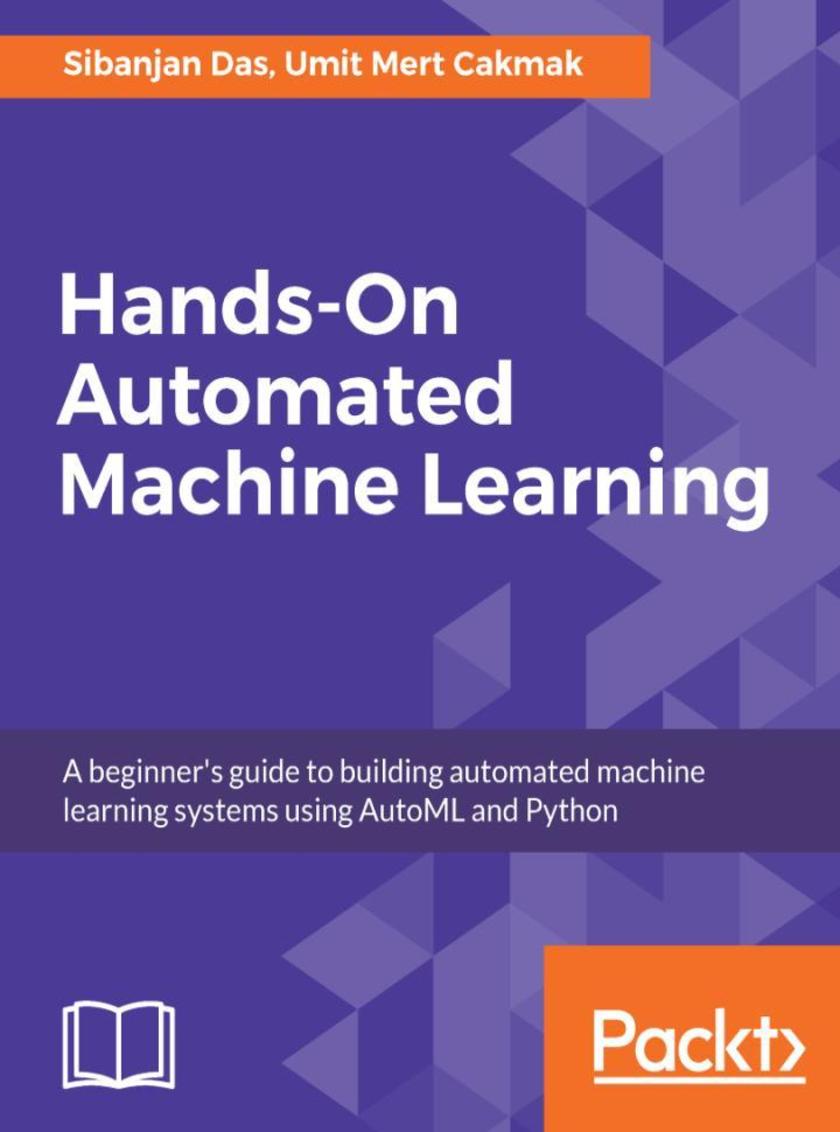
Hands-On Automated Machine Learning
¥73.02
Automate data and model pipelines for faster machine learning applications About This Book ? Build automated modules for different machine learning components ? Understand each component of a machine learning pipeline in depth ? Learn to use different open source AutoML and feature engineering platforms Who This Book Is For If you’re a budding data scientist, data analyst, or Machine Learning enthusiast and are new to the concept of automated machine learning, this book is ideal for you. You’ll also find this book useful if you’re an ML engineer or data professional interested in developing quick machine learning pipelines for your projects. Prior exposure to Python programming will help you get the best out of this book. What You Will Learn ? Understand the fundamentals of Automated Machine Learning systems ? Explore auto-sklearn and MLBox for AutoML tasks ? Automate your preprocessing methods along with feature transformation ? Enhance feature selection and generation using the Python stack ? Assemble individual components of ML into a complete AutoML framework ? Demystify hyperparameter tuning to optimize your ML models ? Dive into Machine Learning concepts such as neural networks and autoencoders ? Understand the information costs and trade-offs associated with AutoML In Detail AutoML is designed to automate parts of Machine Learning. Readily available AutoML tools are making data science practitioners’ work easy and are received well in the advanced analytics community. Automated Machine Learning covers the necessary foundation needed to create automated machine learning modules and helps you get up to speed with them in the most practical way possible. In this book, you’ll learn how to automate different tasks in the machine learning pipeline such as data preprocessing, feature selection, model training, model optimization, and much more. In addition to this, it demonstrates how you can use the available automation libraries, such as auto-sklearn and MLBox, and create and extend your own custom AutoML components for Machine Learning. By the end of this book, you will have a clearer understanding of the different aspects of automated Machine Learning, and you’ll be able to incorporate automation tasks using practical datasets. You can leverage your learning from this book to implement Machine Learning in your projects and get a step closer to winning various machine learning competitions. Style and approach Step by step approach to understand how to automate your machine learning tasks
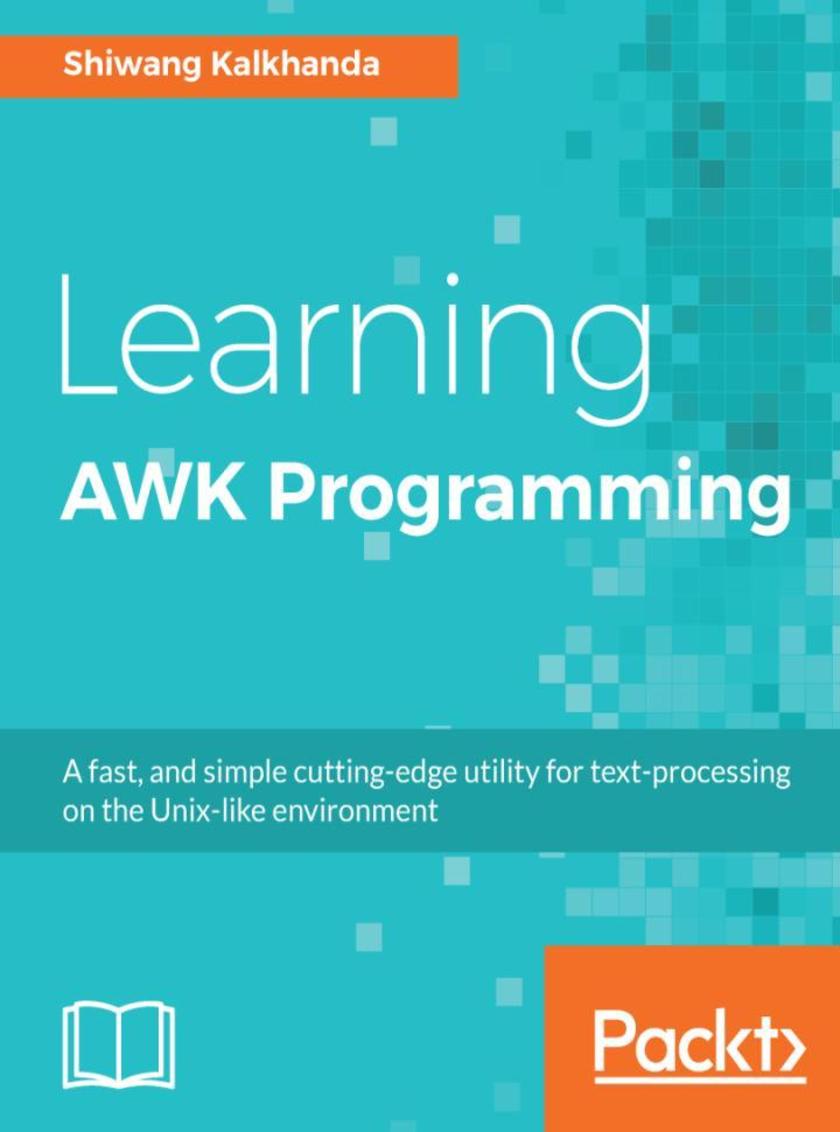
Learning AWK Programming
¥73.02
Text processing and pattern matching simplified About This Book ? Master the fastest and most elegant big data munging language ? Implement text processing and pattern matching using the advanced features of AWK and GAWK ? Implement debugging and inter-process communication using GAWK Who This Book Is For This book is for developers or analysts who are inclined to learn how to do text processing and data extraction in a Unix-like environment. Basic understanding of Linux operating system and shell scripting will help you to get the most out of the book. What You Will Learn ? Create and use different expressions and control flow statements in AWK ? Use Regular Expressions with AWK for effective text-processing ? Use built-in and user-defined variables to write AWK programs ? Use redirections in AWK programs and create structured reports ? Handle non-decimal input, 2-way inter-process communication with Gawk ? Create small scripts to reformat data to match patterns and process texts In Detail AWK is one of the most primitive and powerful utilities which exists in all Unix and Unix-like distributions. It is used as a command-line utility when performing a basic text-processing operation, and as programming language when dealing with complex text-processing and mining tasks. With this book, you will have the required expertise to practice advanced AWK programming in real-life examples. The book starts off with an introduction to AWK essentials. You will then be introduced to regular expressions, AWK variables and constants, arrays and AWK functions and more. The book then delves deeper into more complex tasks, such as printing formatted output in AWK, control flow statements, GNU's implementation of AWK covering the advanced features of GNU AWK, such as network communication, debugging, and inter-process communication in the GAWK programming language which is not easily possible with AWK. By the end of this book, the reader will have worked on the practical implementation of text processing and pattern matching using AWK to perform routine tasks. Style and approach An easy-to-follow, step by step guide which will help you get to grips with real-world applications of AWK programming.
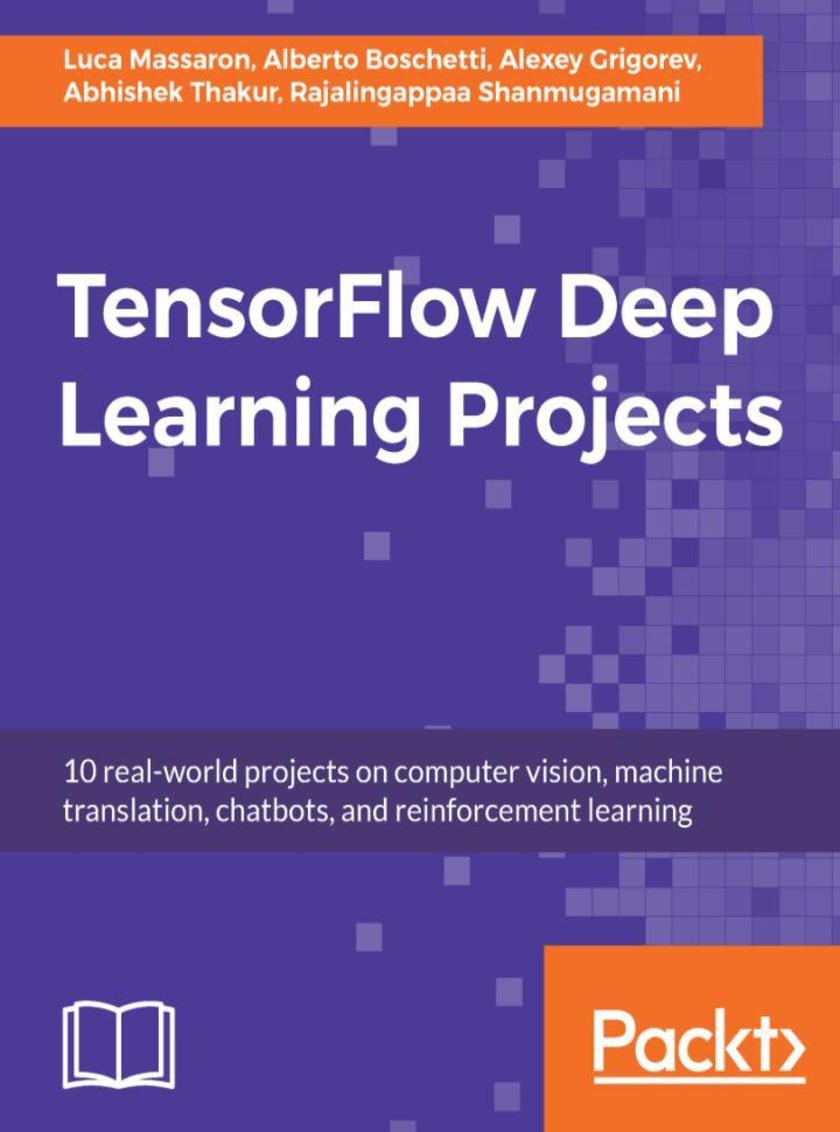
TensorFlow Deep Learning Projects
¥73.02
Leverage the power of Tensorflow to design deep learning systems for a variety of real-world scenarios About This Book ? Build efficient deep learning pipelines using the popular Tensorflow framework ? Train neural networks such as ConvNets, generative models, and LSTMs ? Includes projects related to Computer Vision, stock prediction, chatbots and more Who This Book Is For This book is for data scientists, machine learning developers as well as deep learning practitioners, who want to build interesting deep learning projects that leverage the power of Tensorflow. Some understanding of machine learning and deep learning, and familiarity with the TensorFlow framework is all you need to get started with this book. What You Will Learn ? Set up the TensorFlow environment for deep learning ? Construct your own ConvNets for effective image processing ? Use LSTMs for image caption generation ? Forecast stock prediction accurately with an LSTM architecture ? Learn what semantic matching is by detecting duplicate Quora questions ? Set up an AWS instance with TensorFlow to train GANs ? Train and set up a chatbot to understand and interpret human input ? Build an AI capable of playing a video game by itself –and win it! In Detail TensorFlow is one of the most popular frameworks used for machine learning and, more recently, deep learning. It provides a fast and efficient framework for training different kinds of deep learning models, with very high accuracy. This book is your guide to master deep learning with TensorFlow with the help of 10 real-world projects. TensorFlow Deep Learning Projects starts with setting up the right TensorFlow environment for deep learning. Learn to train different types of deep learning models using TensorFlow, including Convolutional Neural Networks, Recurrent Neural Networks, LSTMs, and Generative Adversarial Networks. While doing so, you will build end-to-end deep learning solutions to tackle different real-world problems in image processing, recommendation systems, stock prediction, and building chatbots, to name a few. You will also develop systems that perform machine translation, and use reinforcement learning techniques to play games. By the end of this book, you will have mastered all the concepts of deep learning and their implementation with TensorFlow, and will be able to build and train your own deep learning models with TensorFlow confidently. Style and approach This book contains 10 unique, end-to-end projects covering all aspects of deep learning and their implementations with TensorFlow. Each project will equip you with a unique skillset in training efficient deep learning models, and empower you to implement your own projects more confidently
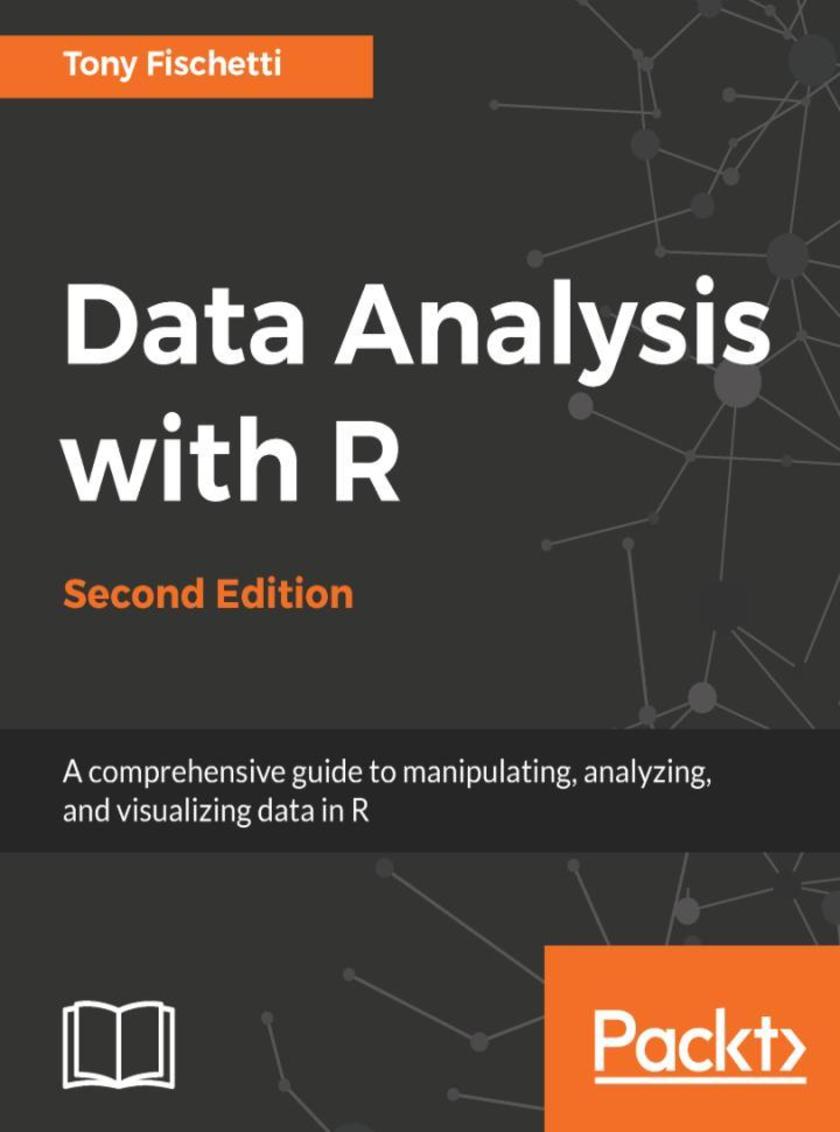
Data Analysis with R - Second Edition
¥73.02
Learn, by example, the fundamentals of data analysis as well as several intermediate to advanced methods and techniques ranging from classification and regression to Bayesian methods and MCMC, which can be put to immediate use. About This Book ? Analyze your data using R – the most powerful statistical programming language ? Learn how to implement applied statistics using practical use-cases ? Use popular R packages to work with unstructured and structured data Who This Book Is For Budding data scientists and data analysts who are new to the concept of data analysis, or who want to build efficient analytical models in R will find this book to be useful. No prior exposure to data analysis is needed, although a fundamental understanding of the R programming language is required to get the best out of this book. What You Will Learn ? Gain a thorough understanding of statistical reasoning and sampling theory ? Employ hypothesis testing to draw inferences from your data ? Learn Bayesian methods for estimating parameters ? Train regression, classification, and time series models ? Handle missing data gracefully using multiple imputation ? Identify and manage problematic data points ? Learn how to scale your analyses to larger data with Rcpp, data.table, dplyr, and parallelization ? Put best practices into effect to make your job easier and facilitate reproducibility In Detail Frequently the tool of choice for academics, R has spread deep into the private sector and can be found in the production pipelines at some of the most advanced and successful enterprises. The power and domain-specificity of R allows the user to express complex analytics easily, quickly, and succinctly. Starting with the basics of R and statistical reasoning, this book dives into advanced predictive analytics, showing how to apply those techniques to real-world data though with real-world examples. Packed with engaging problems and exercises, this book begins with a review of R and its syntax with packages like Rcpp, ggplot2, and dplyr. From there, get to grips with the fundamentals of applied statistics and build on this knowledge to perform sophisticated and powerful analytics. Solve the difficulties relating to performing data analysis in practice and find solutions to working with messy data, large data, communicating results, and facilitating reproducibility. This book is engineered to be an invaluable resource through many stages of anyone’s career as a data analyst. Style and approach An easy-to-follow step by step guide which will help you get to grips with real world application of Data Analysis with R
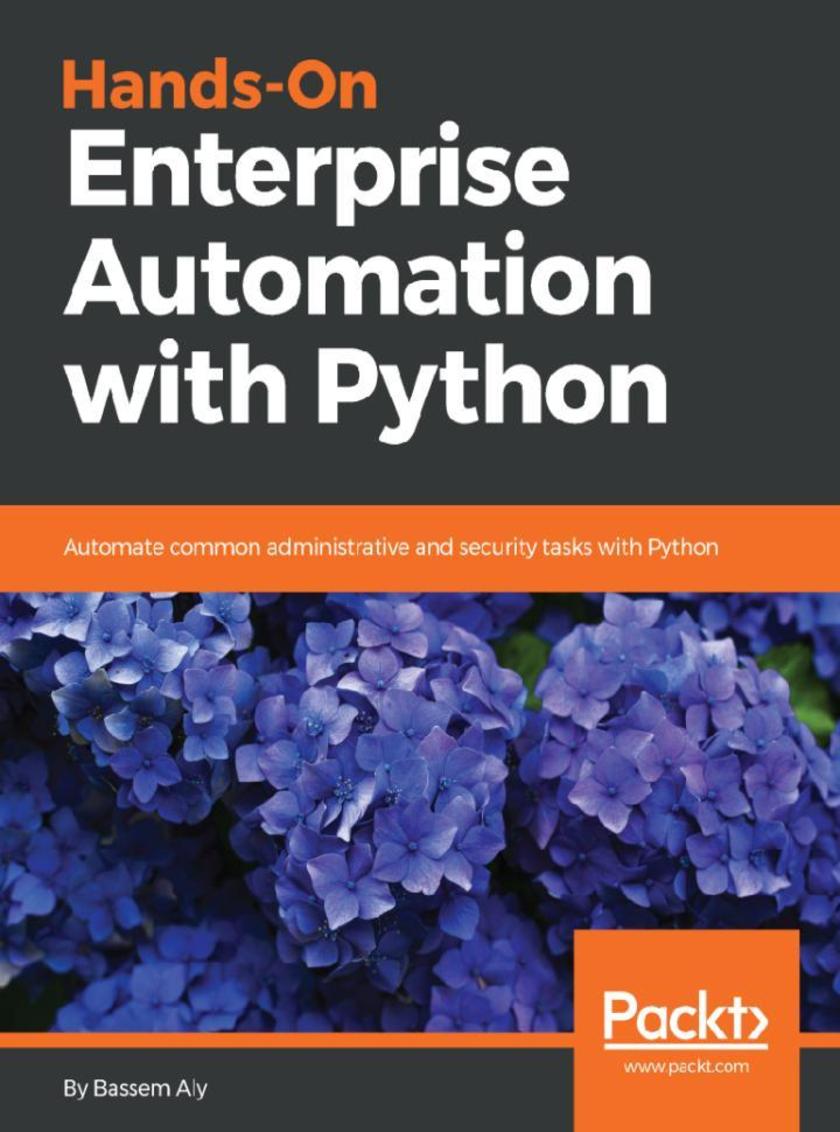
Hands-On Enterprise Automation with Python.
¥73.02
Invent your own Python scripts to automate your infrastructure About This Book ? Make the most of Python libraries and modules to automate your infrastructure ? Leverage Python programming to automate server configurations and administration tasks ? Efficiently develop your Python skill set Who This Book Is For Hands-On Enterprise Automation with Python is for system administrators and DevOps engineers who are looking for an alternative to major automation frameworks such as Puppet and Chef. Basic programming knowledge with Python and Linux shell scripting is necessary. What You Will Learn ? Understand common automation modules used in Python ? Develop Python scripts to manage network devices ? Automate common Linux administration tasks with Ansible and Fabric ? Managing Linux processes ? Administrate VMware, OpenStack, and AWS instances with Python ? Security automation and sharing code on GitHub In Detail Hands-On Enterprise Automation with Python starts by covering the set up of a Python environment to perform automation tasks, as well as the modules, libraries, and tools you will be using. We’ll explore examples of network automation tasks using simple Python programs and Ansible. Next, we will walk you through automating administration tasks with Python Fabric, where you will learn to perform server configuration and administration, along with system administration tasks such as user management, database management, and process management. As you progress through this book, you’ll automate several testing services with Python scripts and perform automation tasks on virtual machines and cloud infrastructure with Python. In the concluding chapters, you will cover Python-based offensive security tools and learn how to automate your security tasks. By the end of this book, you will have mastered the skills of automating several system administration tasks with Python. Style and approach This book will follow a practical approach to help you script and automate tasks using Python.
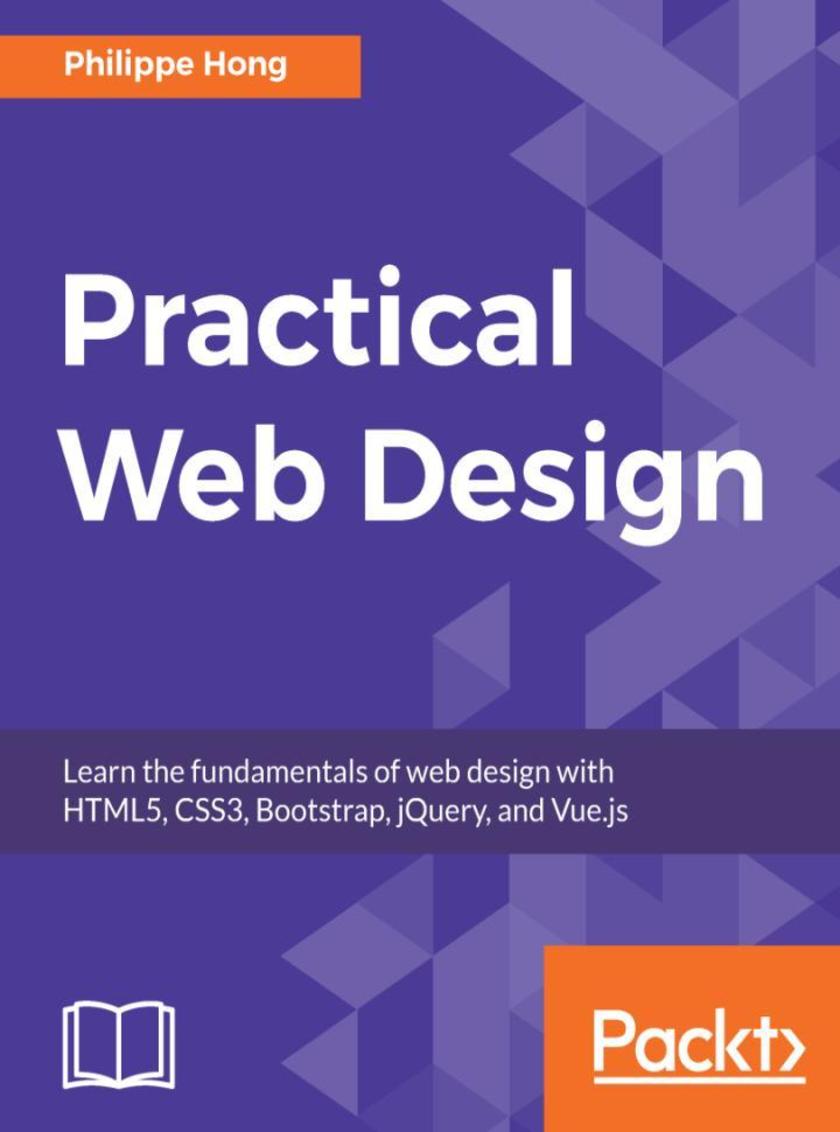
Practical Web Design
¥73.02
A step by step guide for beginners to create interactive and dynamic websites from scratch. About This Book ? A fun-filled book with incrementing projects that would help you learn and adapt the fundamentals of web development ? Bring your web design to life with the help of HTML, CSS, JQuery, and learn to kick-start your future projects with Bootstrap ? Explore popular web development techniques such as responsive, adaptive, and material design and initiate yourself with Vue.js Who This Book Is For This book is for anyone who wants to learn about web development regardless of previous experience. It's perfect for complete beginners with zero experience; it's also great for anyone who does have some experience in a few technologies (such as HTML and CSS) but not all of them. What You Will Learn ? Understand the importance of web design and the basic design components ? Learn HTML5 and CSS3 ? Difference between adaptive and responsive web design ? Learn how to create your first website ? Add interaction and dynamic content to your website with JavaScript and JQuery ? Implement Bootstrap Framework in your project ? Get familiar with server-side rendering In Detail Web design is the process of creating websites. It encompasses several different aspects, including webpage layout, content production, and graphic design. This book offers you everything you need to know to build your websites. The book starts off by explaining the importance of web design and the basic design components used in website development. It'll show you insider tips to work quickly and efficiently with web technologies such as HTML5, CSS3, and JavaScript, concluding with a project on creating a static site with good layout. Once you've got that locked down, we'll get our hands dirty by diving straight into learning JavaScript and JQuery, ending with a project on creating dynamic content for your website. After getting our basic website up and running with the dynamic functionalities you'll move on to building your own responsive websites using more advanced techniques such as Bootstrap. Later you will learn smart ways to add dynamic content, and modern UI techniques such as Adaptive UI and Material Design. This will help you understand important concepts such as server-side rendering and UI components. Finally we take a look at various developer tools to ease your web development process. Style and approach This is a fun-filled book with conversational and engaging content ; with each incrementing project, you'll would easily learn and adapt the fundamentals of web development. Each project showcases a different use case and incrementally teaches the web development basics.
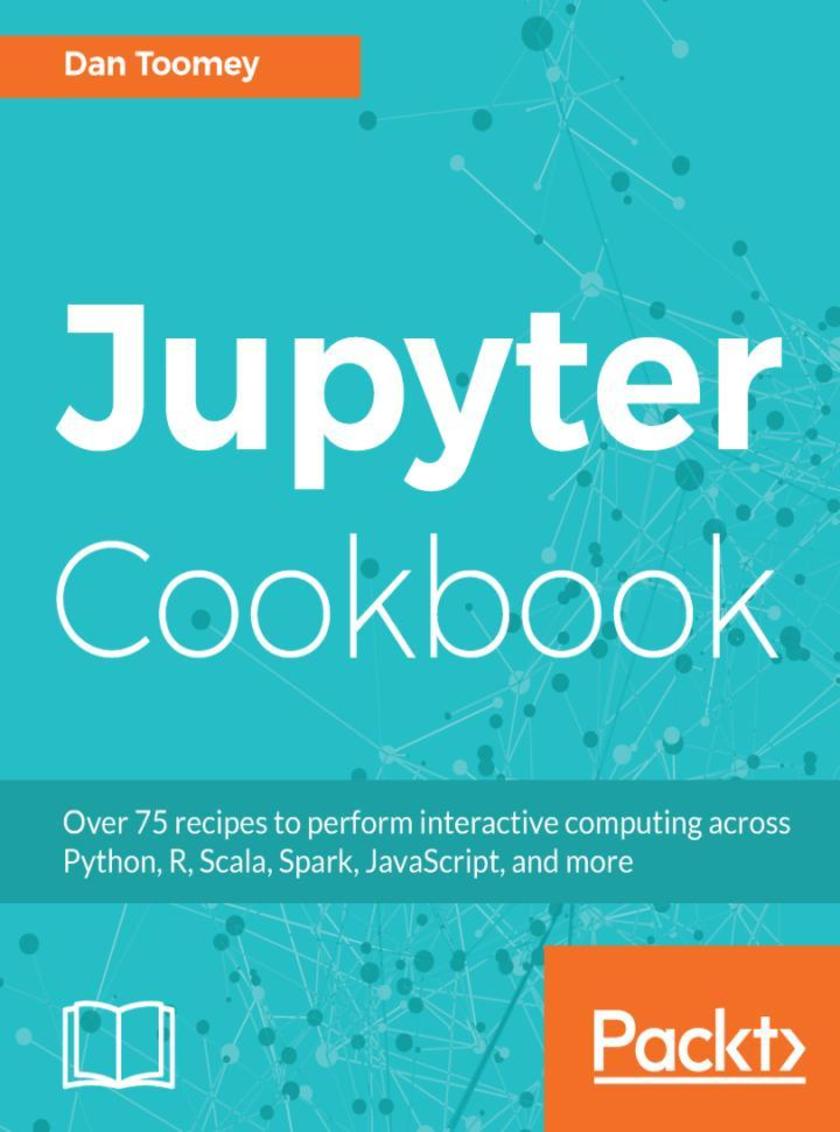
Jupyter Cookbook
¥73.02
Leverage the power of the popular Jupyter notebooks to simplify your data science tasks without any hassle About This Book ? Create and share interactive documents with live code, text and visualizations ? Integrate popular programming languages such as Python, R, Julia, Scala with Jupyter ? Develop your widgets and interactive dashboards with these innovative recipes Who This Book Is For This cookbook is for data science professionals, developers, technical data analysts, and programmers who want to execute technical coding, visualize output, and do scientific computing in one tool. Prior understanding of data science concepts will be helpful, but not mandatory, to use this book. What You Will Learn ? Install Jupyter and configure engines for Python, R, Scala and more ? Access and retrieve data on Jupyter Notebooks ? Create interactive visualizations and dashboards for different scenarios ? Convert and share your dynamic codes using HTML, JavaScript, Docker, and more ? Create custom user data interactions using various Jupyter widgets ? Manage user authentication and file permissions ? Interact with Big Data to perform numerical computing and statistical modeling ? Get familiar with Jupyter's next-gen user interface - JupyterLab In Detail Jupyter has garnered a strong interest in the data science community of late, as it makes common data processing and analysis tasks much simpler. This book is for data science professionals who want to master various tasks related to Jupyter to create efficient, easy-to-share, scientific applications. The book starts with recipes on installing and running the Jupyter Notebook system on various platforms and configuring the various packages that can be used with it. You will then see how you can implement different programming languages and frameworks, such as Python, R, Julia, JavaScript, Scala, and Spark on your Jupyter Notebook. This book contains intuitive recipes on building interactive widgets to manipulate and visualize data in real time, sharing your code, creating a multi-user environment, and organizing your notebook. You will then get hands-on experience with Jupyter Labs, microservices, and deploying them on the web. By the end of this book, you will have taken your knowledge of Jupyter to the next level to perform all key tasks associated with it. Style and approach The recipes in this book are highly practical and very easy to follow, and include tips and tricks that will help you crack any problem that you might come across while getting the most out of your Jupyter notebook.
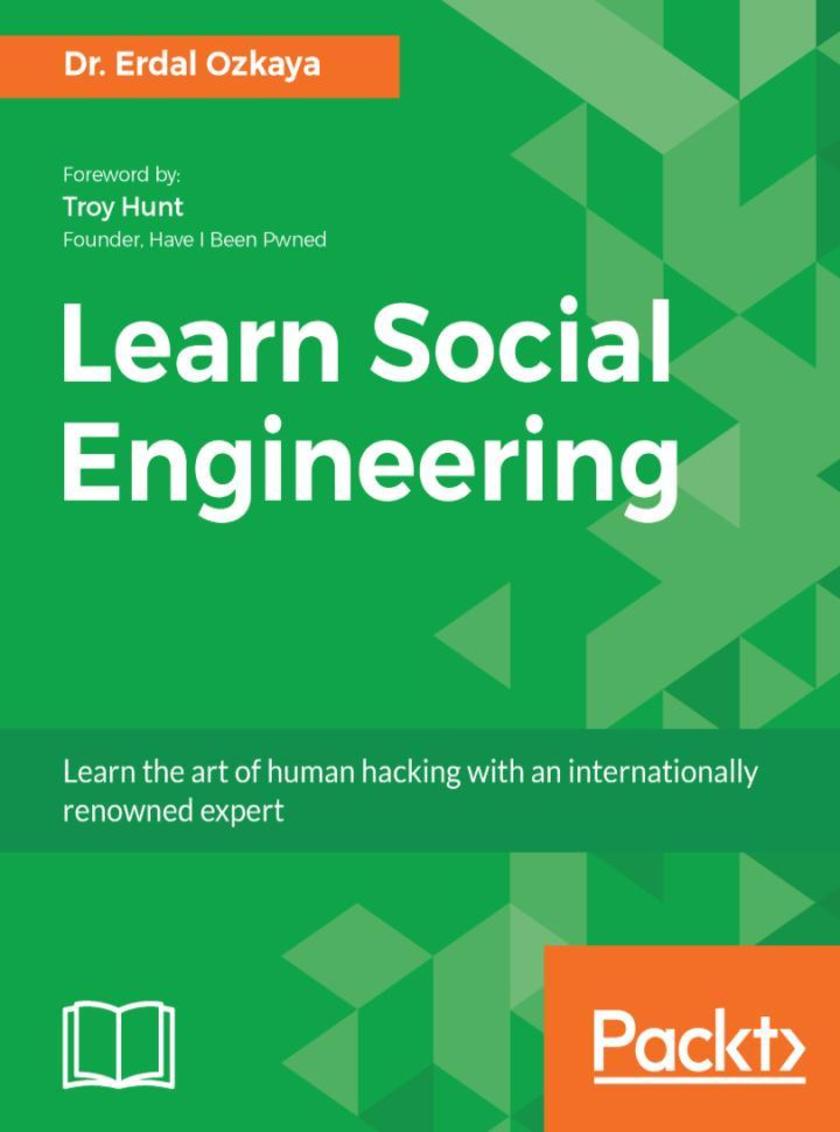
Learn Social Engineering
¥73.02
Improve information security by learning Social Engineering. About This Book ? Learn to implement information security using social engineering ? Get hands-on experience of using different tools such as Kali Linux, the Social Engineering toolkit and so on ? Practical approach towards learning social engineering, for IT security Who This Book Is For This book targets security professionals, security analysts, penetration testers, or any stakeholder working with information security who wants to learn how to use social engineering techniques. Prior knowledge of Kali Linux is an added advantage What You Will Learn ? Learn to implement information security using social engineering ? Learn social engineering for IT security ? Understand the role of social media in social engineering ? Get acquainted with Practical Human hacking skills ? Learn to think like a social engineer ? Learn to beat a social engineer In Detail This book will provide you with a holistic understanding of social engineering. It will help you to avoid and combat social engineering attacks by giving you a detailed insight into how a social engineer operates. Learn Social Engineering starts by giving you a grounding in the different types of social engineering attacks,and the damages they cause. It then sets up the lab environment to use different toolS and then perform social engineering steps such as information gathering. The book covers topics from baiting, phishing, and spear phishing, to pretexting and scareware. By the end of the book, you will be in a position to protect yourself and your systems from social engineering threats and attacks. All in all, the book covers social engineering from A to Z , along with excerpts from many world wide known security experts. Style and approach A step-by-step practical guide that will get you well acquainted with Social Engineering. You’ll be able to get started with it in a matter of minutes with the help of different tools such as the Social Engineering toolkit , Kali Linux and so on.
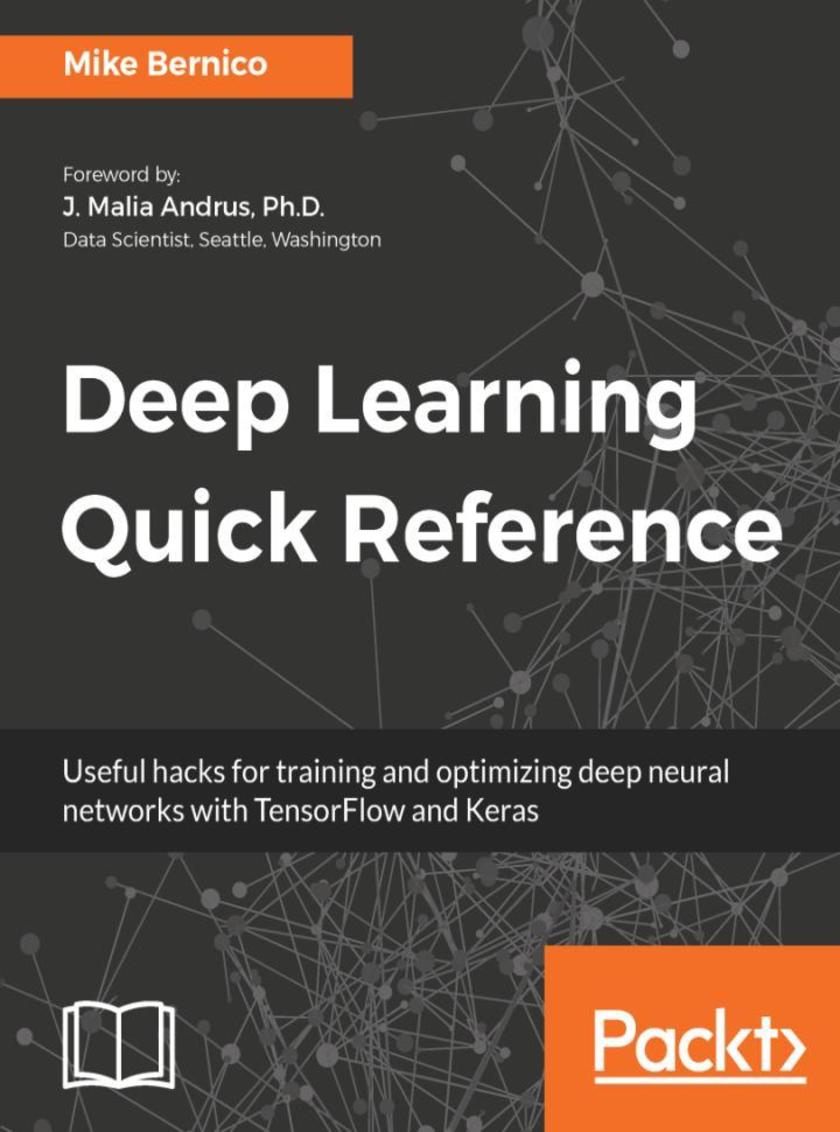
Deep Learning Quick Reference
¥73.02
Dive deeper into neural networks and get your models trained, optimized with this quick reference guide About This Book ? A quick reference to all important deep learning concepts and their implementations ? Essential tips, tricks, and hacks to train a variety of deep learning models such as CNNs, RNNs, LSTMs, and more ? Supplemented with essential mathematics and theory, every chapter provides best practices and safe choices for training and fine-tuning your models in Keras and Tensorflow. Who This Book Is For If you are a Data Scientist or a Machine Learning expert, then this book is a very useful read in training your advanced machine learning and deep learning models. You can also refer this book if you are stuck in-between the neural network modeling and need immediate assistance in getting accomplishing the task smoothly. Some prior knowledge of Python and tight hold on the basics of machine learning is required. What You Will Learn ? Solve regression and classification challenges with TensorFlow and Keras ? Learn to use Tensor Board for monitoring neural networks and its training ? Optimize hyperparameters and safe choices/best practices ? Build CNN's, RNN's, and LSTM's and using word embedding from scratch ? Build and train seq2seq models for machine translation and chat applications. ? Understanding Deep Q networks and how to use one to solve an autonomous agent problem. ? Explore Deep Q Network and address autonomous agent challenges. In Detail Deep learning has become an essential necessity to enter the world of artificial intelligence. With this book deep learning techniques will become more accessible, practical, and relevant to practicing data scientists. It moves deep learning from academia to the real world through practical examples. You will learn how Tensor Board is used to monitor the training of deep neural networks and solve binary classification problems using deep learning. Readers will then learn to optimize hyperparameters in their deep learning models. The book then takes the readers through the practical implementation of training CNN's, RNN's, and LSTM's with word embeddings and seq2seq models from scratch. Later the book explores advanced topics such as Deep Q Network to solve an autonomous agent problem and how to use two adversarial networks to generate artificial images that appear real. For implementation purposes, we look at popular Python-based deep learning frameworks such as Keras and Tensorflow, Each chapter provides best practices and safe choices to help readers make the right decision while training deep neural networks. By the end of this book, you will be able to solve real-world problems quickly with deep neural networks. Style and approach An easy-to-follow, step-by-step guide to help you get to grips with real-world applications of training deep neural networks.
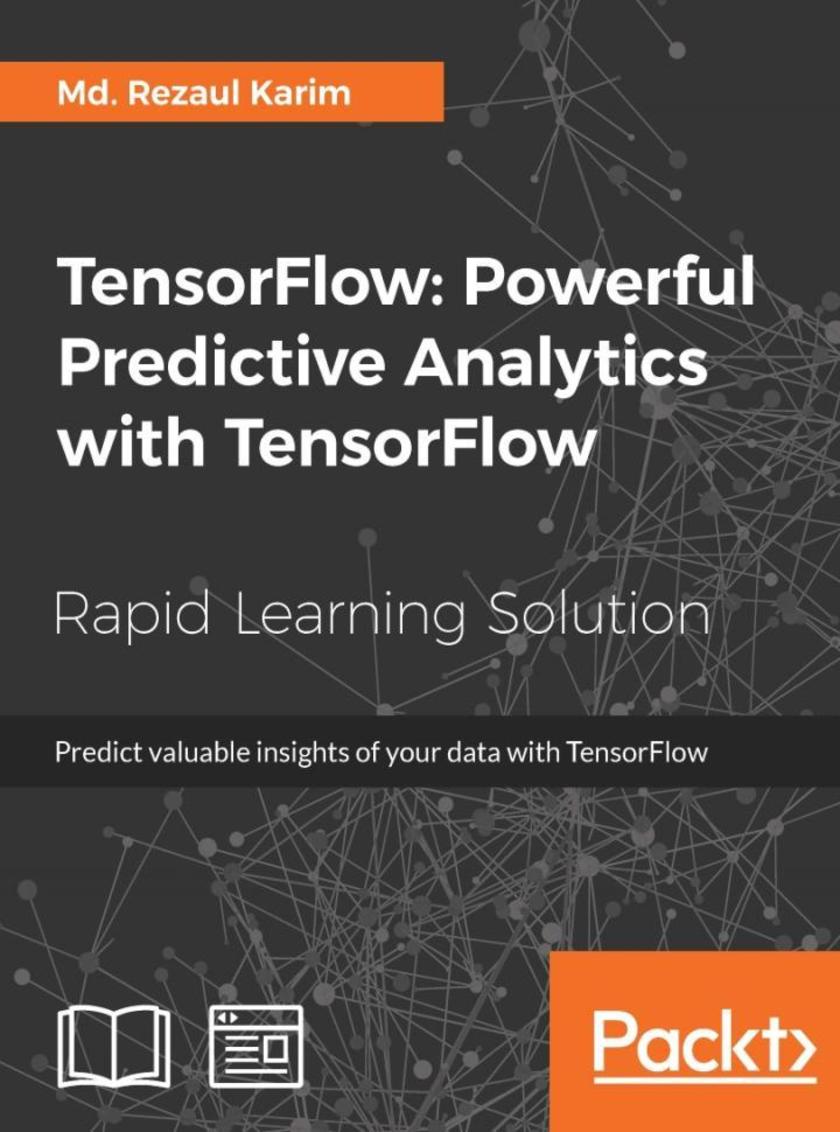
TensorFlow: Powerful Predictive Analytics with TensorFlow
¥73.02
Learn how to solve real life problems using different methods like logic regression, random forests and SVM’s with TensorFlow. About This Book ? Understand predictive analytics along with its challenges and best practices ? Embedded with assessments that will help you revise the concepts you have learned in this book Who This Book Is For This book is aimed at developers, data analysts, machine learning practitioners, and deep learning enthusiasts who want to build powerful, robust, and accurate predictive models with the power of TensorFlow. What You Will Learn ? Learn TensorFlow features in a real-life problem, followed by detailed TensorFlow installation and configuration ? Explore computation graphs, data, and programming models also get an insight into an example of implementing linear regression model for predictive analytics ? Solve the Titanic survival problem using logistic regression, random forests, and SVMs for predictive analytics ? Dig deeper into predictive analytics and find out how to take advantage of it to cluster records belonging to the certain group or class for a dataset of unsupervised observations ? Learn several examples of how to apply reinforcement learning algorithms for developing predictive models on real-life datasets In Detail Predictive analytics discovers hidden patterns from structured and unstructured data for automated decision making in business intelligence. Predictive decisions are becoming a huge trend worldwide, catering to wide industry sectors by predicting which decisions are more likely to give maximum results. TensorFlow, Google’s brainchild, is immensely popular and extensively used for predictive analysis. This book is a quick learning guide on all the three types of machine learning, that is, supervised, unsupervised, and reinforcement learning with TensorFlow. This book will teach you predictive analytics for high-dimensional and sequence data. In particular, you will learn the linear regression model for regression analysis. You will also learn how to use regression for predicting continuous values. You will learn supervised learning algorithms for predictive analytics. You will explore unsupervised learning and clustering using K-meansYou will then learn how to predict neighborhoods using K-means, and then, see another example of clustering audio clips based on their audio features. This book is ideal for developers, data analysts, machine learning practitioners, and deep learning enthusiasts who want to build powerful, robust, and accurate predictive models with the power of TensorFlow. This book is embedded with useful assessments that will help you revise the concepts you have learned in this book. Style and approach This is a fast-paced guide that provides a quick learning solution to all the three types of machine learning, that is, supervised, unsupervised, and reinforcement learning with TensorFlow Note: This book is a blend of text and quizzes, all packaged up keeping your journey in mind. It includes content from the following Packt product: ? Predictive Analytics with TensorFlow by Md. Rezaul Karim
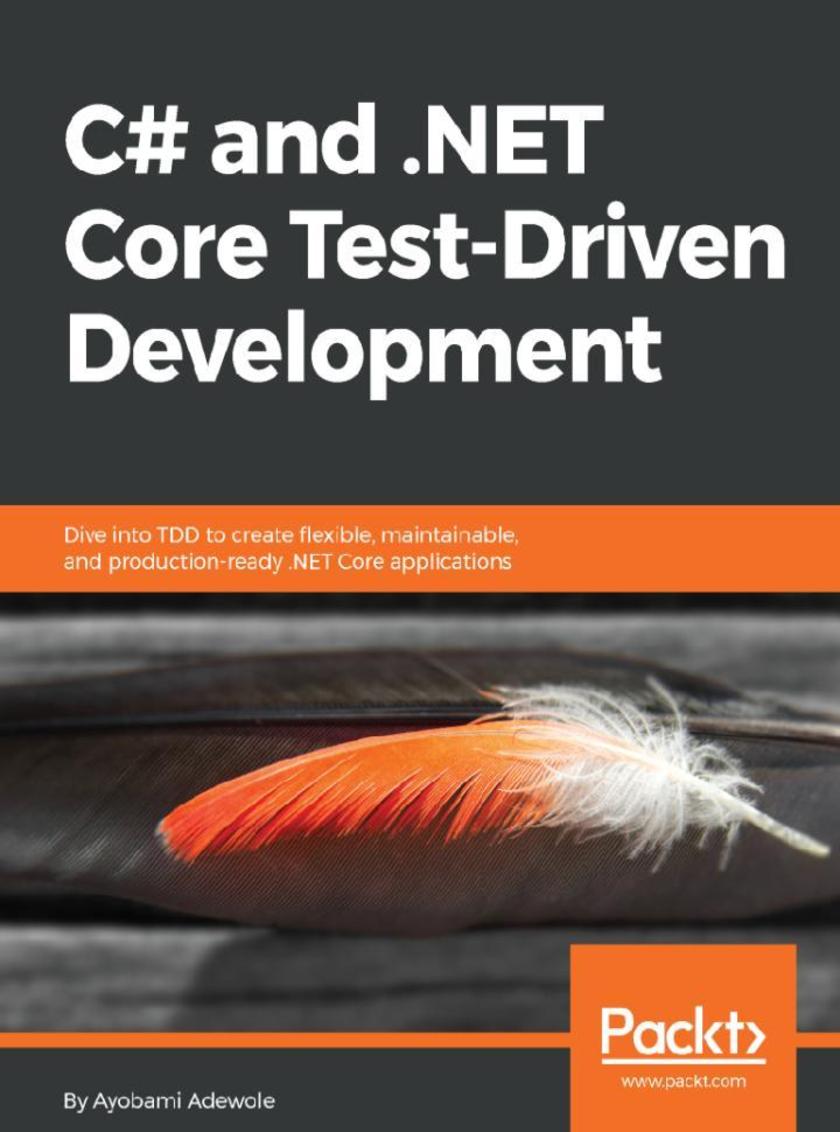
C# and .NET Core Test Driven Development
¥73.02
Learn how to apply a test-driven development process by building ready C# 7 and .NET Core applications. About This Book ? Create tests to quickly detect and resolve issues when writing portable code ? Uncover code integration issues that improve code quality using continuous integration ? Set up and use data-driven unit testing to verify your code Who This Book Is For This book is for .NET developers who would like to build efficient applications by implementing principles of test-driven development. C# programming and working knowledge of VS is assumed. What You Will Learn ? Write flexible, maintainable, and verifiable code for .NET Core ? Write testable code using SOLID principles and dependency injections ? Recognize the characteristics of a good unit test ? Structure and group your unit test ? Use mock objects to handle dependencies ? Set up an end-to-end continuous integration process In Detail This book guides developers to create robust, production-ready C# 7 and .NET Core applications through the practice of test-driven development process. In C# and .NET Core Test-Driven Development, you will learn the different stages of the TDD life cycle, basics of TDD, best practices, and anti-patterns. It will teach you how to create an ASP.NET Core MVC sample application, write testable code with SOLID principles and set up a dependency injection for your sample application. Next, you will learn the xUnit testing framework and learn how to use its attributes and assertions. You’ll see how to create data-driven unit tests and mock dependencies in your code. You will understand the difference between running and debugging your tests on .NET Core on LINUX versus Windows and Visual Studio. As you move forward, you will be able to create a healthy continuous integration process for your sample application using GitHub, TeamCity, Cake, and Microsoft VSTS. By the end of this book, you will have learned how to write clean and robust code through the effective practice of TDD, set up CI build steps to test and build applications as well as how to package application for deployment on NuGet. Style and approach The book explores the concepts of test driven development in depth so readers can apply these proven techniques to build sophisticated software with C# and .NET.
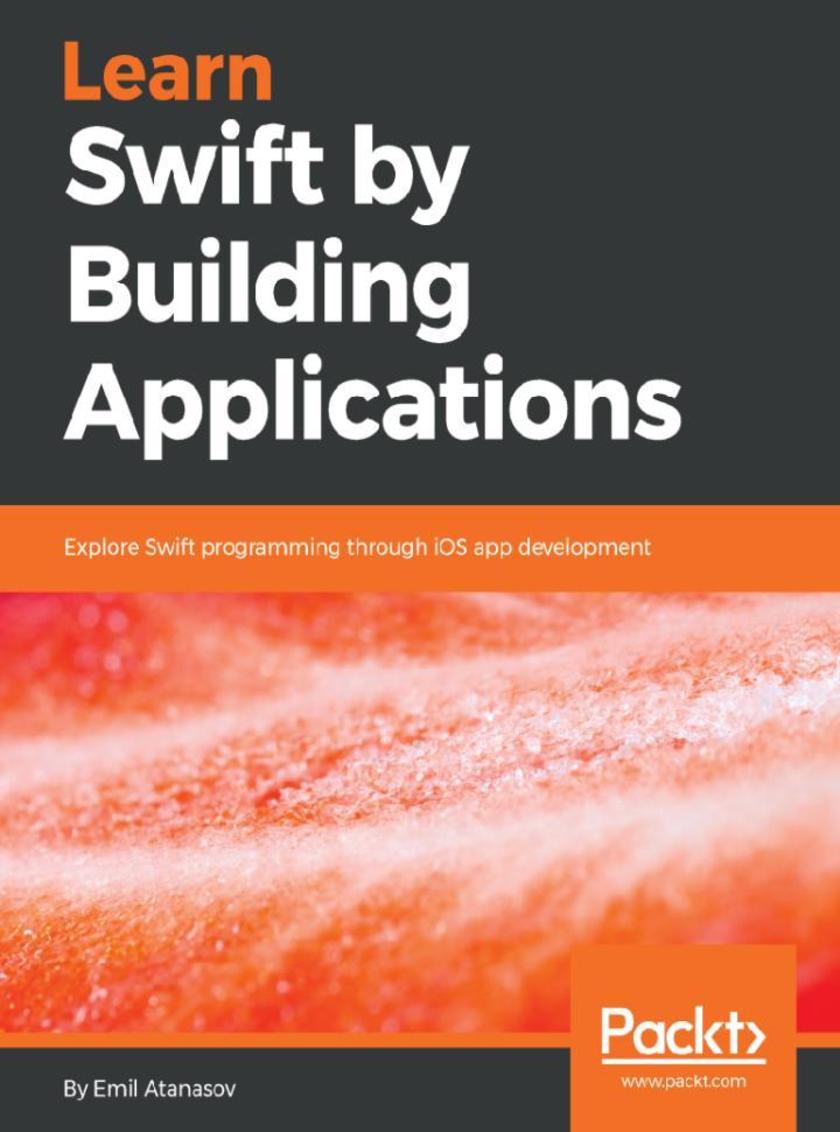
Learn Swift by Building Applications
¥73.02
Start building your very own mobile apps with this comprehensive introduction to Swift and object-oriented programming About This Book ? A complete beginner's guide to Swift programming language ? Understand core Swift programming concepts and techniques for creating popular iOS apps ? Start your journey toward building mobile app development with this practical guide Who This Book Is For This book is for beginners who are new to Swift or may have some preliminary knowledge of Objective-C. If you are interested in learning and mastering Swift in Apple’s ecosystem, namely mobile development, then this book is for you. What You Will Learn ? Become a pro at iOS development by creating simple-to-complex iOS mobile applications ? Master Playgrounds, a unique and intuitive approach to teaching Xcode ? Tackle the basics, including variables, if clauses, functions, loops and structures, classes, and inheritance ? Model real-world objects in Swift and have an in-depth understanding of the data structures used, along with OOP concepts and protocols ? Use CocoaPods, an open source Swift package manager to ease your everyday developer requirements ? Develop a wide range of apps, from a simple weather app to an Instagram-like social app ? Get ahead in the industry by learning how to use third-party libraries efficiently in your apps In Detail Swift Language is now more powerful than ever; it has introduced new ways to solve old problems and has gone on to become one of the fastest growing popular languages. It is now a de-facto choice for iOS developers and it powers most of the newly released and popular apps. This practical guide will help you to begin your journey with Swift programming through learning how to build iOS apps. You will learn all about basic variables, if clauses, functions, loops, and other core concepts; then structures, classes, and inheritance will be discussed. Next, you’ll dive into developing a weather app that consumes data from the internet and presents information to the user. The final project is more complex, involving creating an Instagram like app that integrates different external libraries. The app also uses CocoaPods as its package dependency manager, to give you a cutting-edge tool to add to your skillset. By the end of the book, you will have learned how to model real-world apps in Swift. Style and approach This book has a very practical and hands-on approach towards teaching the user the new and advanced features of Swift.
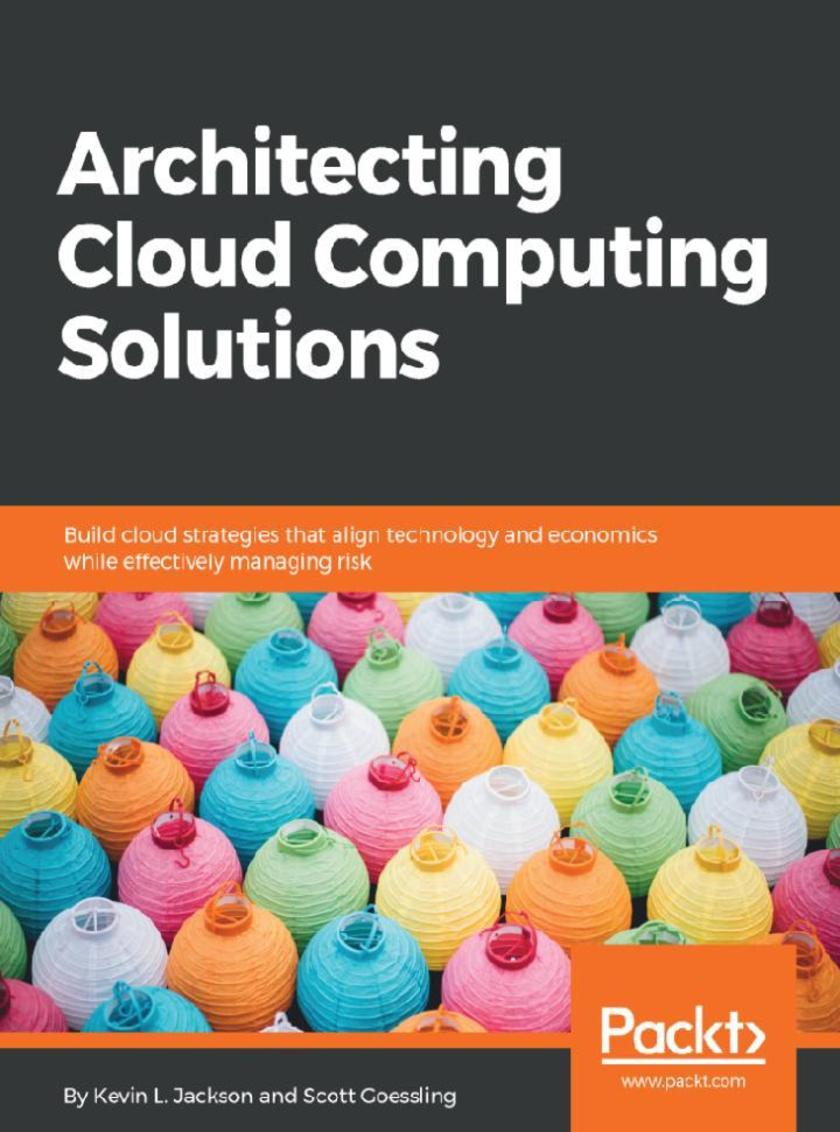
Architecting Cloud Computing Solutions
¥73.02
Accelerating Business and Mission Success with Cloud Computing. About This Book ? A step-by-step guide that will practically guide you through implementing Cloud computing services effectively and efficiently. ? Learn to choose the most ideal Cloud service model, and adopt appropriate Cloud design considerations for your organization. ? Leverage Cloud computing methodologies to successfully develop a cost-effective Cloud environment successfully. Who This Book Is For If you are an IT Administrator, Cloud Architect, or a Solution Architect keen to benefit from cloud adoption for your organization, then this book is for you. Small business owners, managers, or consultants will also find this book useful. No prior knowledge of Cloud computing is needed. What You Will Learn ? Manage changes in the digital transformation and cloud transition process ? Design and build architectures that support specific business cases ? Design, modify, and aggregate baseline cloud architectures ? Familiarize yourself with cloud application security and cloud computing security threats ? Design and architect small, medium, and large cloud computing solutions In Detail Cloud adoption is a core component of digital transformation. Scaling the IT environment, making it resilient, and reducing costs are what organizations want. Architecting Cloud Computing Solutions presents and explains critical Cloud solution design considerations and technology decisions required to choose and deploy the right Cloud service and deployment models, based on your business and technology service requirements. This book starts with the fundamentals of cloud computing and its architectural concepts. It then walks you through Cloud service models (IaaS, PaaS, and SaaS), deployment models (public, private, community, and hybrid) and implementation options (Enterprise, MSP, and CSP) to explain and describe the key considerations and challenges organizations face during cloud migration. Later, this book delves into how to leverage DevOps, Cloud-Native, and Serverless architectures in your Cloud environment and presents industry best practices for scaling your Cloud environment. Finally, this book addresses (in depth) managing essential cloud technology service components such as data storage, security controls, and disaster recovery. By the end of this book, you will have mastered all the design considerations and operational trades required to adopt Cloud services, no matter which cloud service provider you choose. Style and approach This book will teach you how to architect effective and organizationally aligned Cloud computing solutions by addressing Cloud computing fundamentals, Cloud architecture considerations, Cloud technology service selection, and Cloud computing security controls.
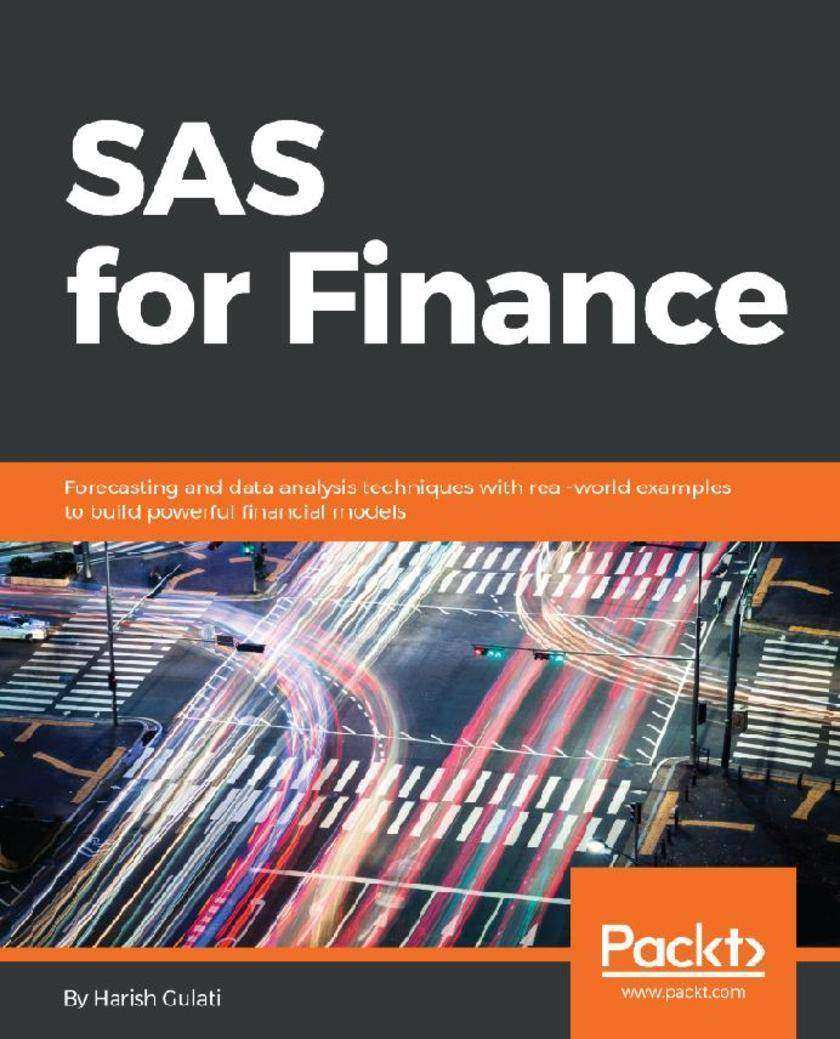
SAS for Finance
¥73.02
Leverage the analytical power of SAS to perform financial analysis efficiently About This Book ? Leverage the power of SAS to analyze financial data with ease ? Find hidden patterns in your data, predict future trends, and optimize risk management ? Learn why leading banks and financial institutions rely on SAS for financial analysis Who This Book Is For Financial data analysts and data scientists who want to use SAS to process and analyze financial data and find hidden patterns and trends from it will find this book useful. Prior exposure to SAS will be helpful but is not mandatory. Some basic understanding of the financial concepts is required. What You Will Learn ? Understand time series data and its relevance in the financial industry ? Build a time series forecasting model in SAS using advanced modeling theories ? Develop models in SAS and infer using regression and Markov chains ? Forecast in?ation by building an econometric model in SAS for your financial planning ? Manage customer loyalty by creating a survival model in SAS using various groupings ? Understand similarity analysis and clustering in SAS using time series data In Detail SAS is a groundbreaking tool for advanced predictive and statistical analytics used by top banks and financial corporations to establish insights from their financial data. SAS for Finance offers you the opportunity to leverage the power of SAS analytics in redefining your data. Packed with real-world examples from leading financial institutions, the author discusses statistical models using time series data to resolve business issues. This book shows you how to exploit the capabilities of this high-powered package to create clean, accurate financial models. You can easily assess the pros and cons of models to suit your unique business needs. By the end of this book, you will be able to leverage the true power of SAS to design and develop accurate analytical models to gain deeper insights into your financial data. Style and approach A comprehensive guide filled with use-cases will ensure that you have a very good conceptual and practical understanding of using SAS in the finance domain.
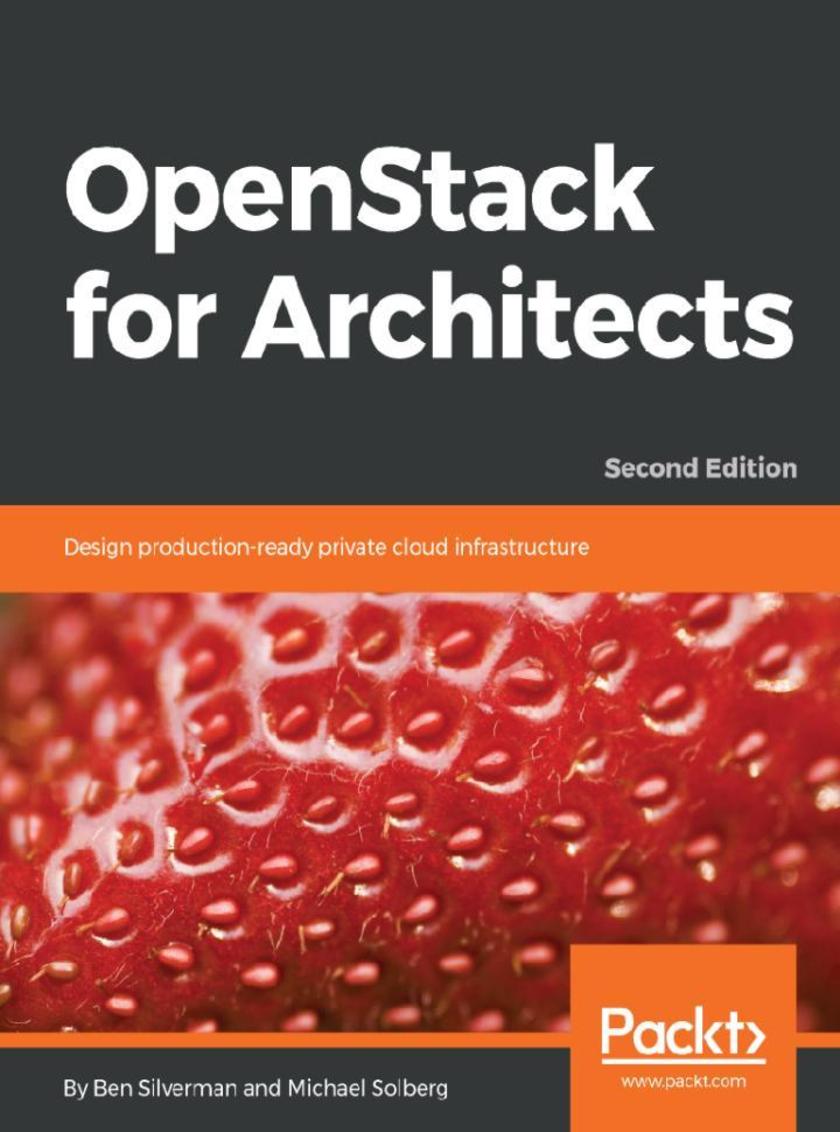
OpenStack for Architects
¥73.02
Implement successful private clouds with OpenStack About This Book ? Gain hands-on experience in designing a private cloud for all infrastructures ? Create a robust virtual environment for your organization ? Design, implement and deploy an OpenStack-based cloud based on the Queens release Who This Book Is For OpenStack for Architects is for Cloud architects who are responsible to design and implement a private cloud with OpenStack. System engineers and enterprise architects will also find this book useful. Basic understanding of core OpenStack services, as well as some working experience of concepts, is recommended. What You Will Learn ? Learn the overall structure of an OpenStack deployment ? Craft an OpenStack deployment process which fits within your organization ? Apply Agile Development methodologies to engineer and operate OpenStack clouds ? Build a product roadmap for Infrastructure as a Service based on OpenStack ? Make use of containers to increase the manageability and resiliency of applications running in and on OpenStack. ? Use enterprise security guidelines for your OpenStack deployment In Detail Over the past six years, hundreds of organizations have successfully implemented Infrastructure as a Service (IaaS) platforms based on OpenStack. The huge amount of investment from these organizations, including industry giants such as IBM and HP, as well as open source leaders, such as Red Hat, Canonical, and SUSE, has led analysts to label OpenStack as the most important open source technology since the Linux operating system. Due to its ambitious scope, OpenStack is a complex and fast-evolving open source project that requires a diverse skill set to design and implement it. OpenStack for Architects leads you through the major decision points that you'll face while architecting an OpenStack private cloud for your organization. This book will address the recent changes made in the latest OpenStack release i.e Queens, and will also deal with advanced concepts such as containerization, NVF, and security. At each point, the authors offer you advice based on the experience they've gained from designing and leading successful OpenStack projects in a wide range of industries. Each chapter also includes lab material that gives you a chance to install and configure the technologies used to build production-quality OpenStack clouds. Most importantly, the book focuses on ensuring that your OpenStack project meets the needs of your organization, which will guarantee a successful rollout. Style and approach This is practical, hands-on guide to implementing OpenStack clouds, where each topic is illustrated with real-world examples and then the technical points are proven in the lab. Conceptual chapters are written in discussion style to convey important concepts quickly and present decision points for choosing options.
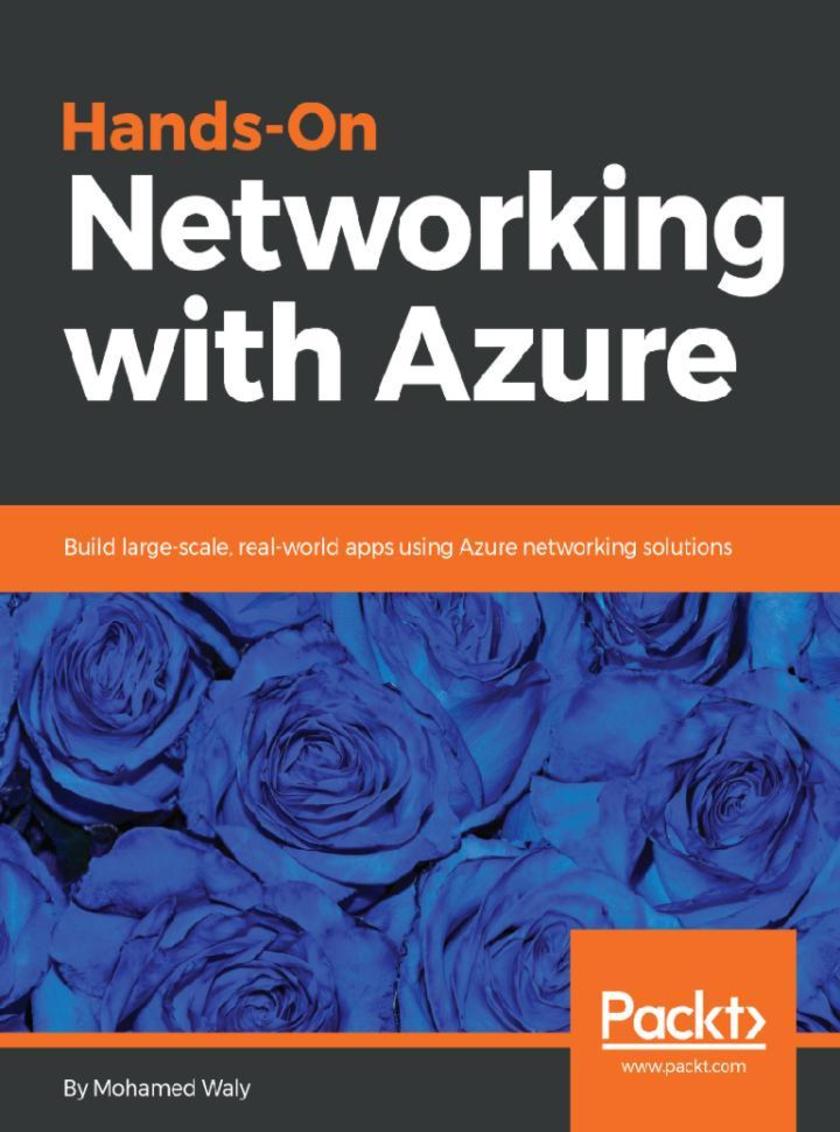
Hands-On Networking with Azure
¥73.02
A step-by-step guide to get you up and running with Azure Networking Services and help you build solutions that leverage effective design patterns About This Book ? Learn best practices for designing and implementing Azure Networking for Azure VMs ? Figure out the hidden secrets to designing a cost-effective environment ? Plan, design, and implement various connectivity scenarios in Azure Who This Book Is For This book is for developers, IT professionals, and database admins who have prior experience of working on Microsoft Azure and want to make the most out of Azure Networking Services. What You Will Learn ? Understand Azure networking and use the right networking service to fulfill your needs ? Design Azure Networks for Azure VMs according to best practices ? Span your environment with Azure networking solutions ? Learn to use Azure DNS ? Implement Azure Load Balancer for highly available environments ? Distribute user traffic across the world via the Azure Traffic Manager ? Control your application delivery with Azure Application Gateway In Detail Microsoft Azure networking is one of the most valuable and important offerings in Azure. No matter what solution you are building for the cloud, you'll find a compelling use for it. This book will get you up to speed quickly on Microsoft Azure Networking by teaching you how to use different networking services. By reading this book, you will develop a strong networking foundation for Azure virtual machines and for expanding your on-premise environment to Azure. Hands-On Networking with Azure starts with an introduction to Microsoft Azure networking and creating Azure Virtual Networks with subnets of different types within them. The book helps you understand the architecture of Azure networks. You will then learn the best practices for designing both Windows- and Linux-based Azure VM networks. You will also learn to expand your networks into Azure and how to use Azure DNS. Moreover, you will master best practices for dealing with Azure Load Balancer and the solutions they offer in different scenarios. Finally, we will demonstrate how the Azure Application Gateway works, offering various layer-7 load balancing capabilities for applications. By the end of this book, you will be able to architect your networking solutions for Azure. Style and approach This book provides in-depth insights into properly designing your environment and saving money on your running Azure Services. Using cutting-edge examples, you will learn to efficiently monitor, diagnose, and troubleshoot Azure Networking




 购物车
购物车 个人中心
个人中心



